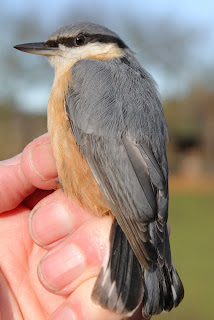

With limited time I didn’t stop at Braides, just a passing leftwards stare as I drove past but certainly there was not a lot in the immediate fields. At Conder pool a Dunnock in the “hide” window greeted me, demanding that I take a photograph, so I duly obliged not sure if I would see much afterwards from the said window.

The previous day’s weather had perhaps had an effect on the numbers of Tufted Duck because I counted 50+, a substantial improvement on recent numbers. Other wildfowl came in at 7 Wigeon, 2 Coot, 84 Teal and 2 Shelduck. I watched the Teal down in the creek where they sifted through the mud for something duckily delicious.



A couple of Grey Heron flew the around creeks and the pool without getting near enough to photograph, as did a hovering Kestrel, a couple of Skylark, 6 Goldfinch and a few of that scarcity, Greenfinch. I didn’t see the usual Spotted Redshank or Greenshank today, even when I walked the railway bridge, but I saw the normal small numbers of Redshank and Curlew.
Near The Stork I bumped into PW religiously doing his birding thing again, but taking time out to lean into my car and exchange pleasantries and information, despite the traffic hurtling past desperate to reach their places of work. As we agreed, “Even some birders don’t bother to get out of their cars here, least of all Joe Public on the way to Ashton Garden Centre or Leighton Moss.” Oh well, not everyone desires to be a birder, thank goodness. PW gripped me with his count of 56 tufties; I never was much good with figures. But I got my own back by relating the 3 Rock Pipits I’d just seen towards the car park, picking through the debris from the recent high tides. I had also seen 4 or more Meadow Pipits in the same area, less reluctant to leave their search for grub than their rock living cousins. Also here, Pied Wagtails.


I headed off to Cockersands but abandoned my plan to look for the Stonechat and other tideline dwellers when I saw two removal vans and two other vehicles parked up in my spot, guessing that any comings and goings would mean there was little about other than new residents exploring new surroundings.
I then circuited Jeremy Lane without a lot of success but I did find a semi-obliging Little Egret that I took pictures of when it jumped out of a roadside ditch and sat in a field. And the sun was out, for now.



I couldn’t believe it, I looked at my watch.1140, time to get back and watch little Theo demolish the broccoli soup. What an unusual lad! It must be his bringing up.


















































.jpeg)







.jpg)












